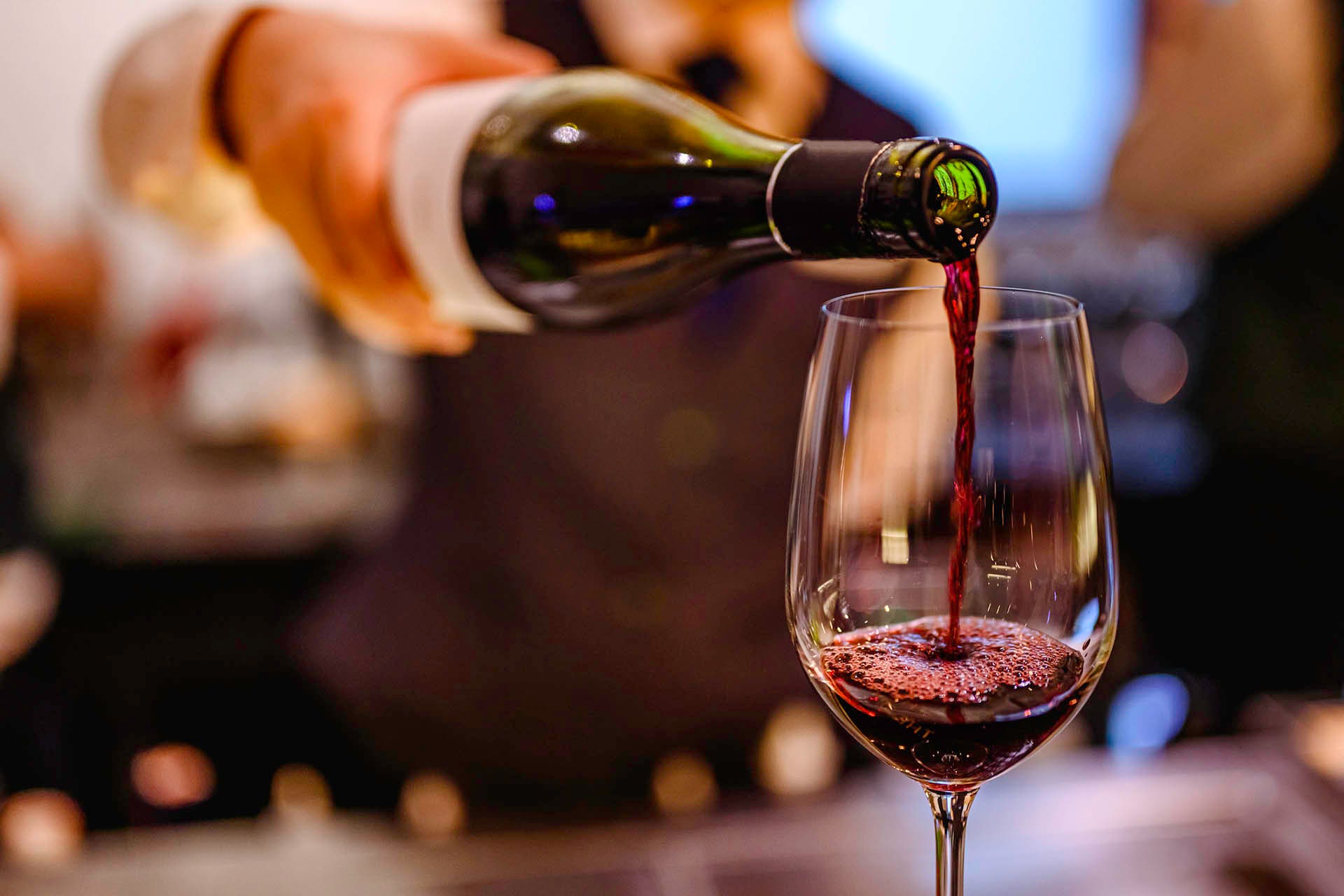Among friends, Sommelier Sam Germani doesn’t always relish picking out wines for her dinner companions. She recalls the anxiety she experienced the first time she heard a friend say, “Give the wine list to her.”
“It was this strange and awful feeling,” says Germani, beverage director of The Rittenhouse Hotel in Philadelphia. “I’m not spending my own money. I don’t want to be rude. There’s this pressure when someone hands you a wine list. It’s like I’m going to fail somebody, and they’ll be like, ‘Ha! I knew it.’ ”
For every confident diner who can point to a bottle of wine on a list and order without hesitation, there are many who fret over picking out the right wine for the right price that fits the people and meal at hand. We spoke with five pros about strategies for selecting the perfect bottle when it’s your turn to somm for your table.
“There’s this pressure when someone hands you a wine list. It’s like I’m going to fail somebody, and they’ll be like, ‘Ha! I knew it.’ ” —Sam Germani, sommelier, The Rittenhouse
Don’t get overwhelmed
Ferdinando Mucerino grew up in Sicily, where restaurant wine options were house red or house white, often made by the proprietors.
“There was nothing French, American or Austrian,” says Mucerino, the in-house somm for Drinks, a direct-to-consumer wine platform. “If you’re in Campania, ordering wine from Piedmont would be preposterous.”
When he moved to the Bay Area, Mucerino first encountered American-style wine lists with bottles from all over the globe. He learned how to navigate the lists by observing guests and fellow pros.
“Learn what your favorite grapes and wine regions are so that even if you’re not familiar with a specific producer, you’ll still have a good idea of what to expect from the wine,” says Mucerino.
And if you like New Zealand Sauvignon Blanc but don’t see it on the menu? Ask a server or somm for a wine that most closely matches it.
Learn to sell like a somm
As a young server in Chicago with a freshly minted sommelier certificate, Wanda Cole-Nicholson was self-conscious about recommending wines to guests until a manager gave her this advice: “Pick some wines you’re comfortable with, and sell those to your tables.” She found a go-to Chardonnay, Sauvignon Blanc, Cabernet Sauvignon and Pinot Noir, and was ready with a mental Rolodex when guests asked for help.
This technique can help you pick bottles for friends as well.
“People want to know what you like, why you like it, and a couple of details about winemaking and terroir,” says Cole-Nicholson, who’s now an advanced sommelier with her own wine event and consulting firm, VinBev. “They want to know how it tastes, and if they can see your enthusiasm, they’ll choose your selection.”

Remember that it’s not always about you
On the other hand, just because you love fresh, light-bodied reds from Alto Adige does not mean your big tannin-guzzling friends will feel the same. “If you’re in charge, the onus is on you to poll the table,” says Chris Struck, beverage director for Ilili, a Lebanese restaurant with locations in New York and Washington, D.C. “Consensus is the way to leave everyone the happiest.”
Start by asking the basics: red, white, rosé or sparkling? What wines do you like? Are people looking for something refreshing or robust? If you think you might order a few bottles, ask your company if they’d like to start with white wine and then move into a red.
If you don’t know everyone at the table, Cole-Nicholson suggests asking if anyone has ever been to wine country. “If they’ve spent a week in Willamette, they’re probably more comfortable drinking Pinot,” she says. “If they vacation in Napa, now you know where to go.”
Establish a budget
Before you let your Napa-loving uncle talk you into a bottle of Opus One, it’s up to you to establish a budget for the evening. Consider the number of guests, how many bottles you’re likely to drink, and the occasion. Mucerino also recommends factoring in a 20% tip, plus tax.
If you plan on splitting the check, and you’re not sure how much people want to spend, Allegra Angelo suggests casually throwing out a range of prices. “Are we under $30, $50, $100?” says Angelo, sommelier and partner at Vinya, a Miami wine shop with a full bar and market.
“It’s okay to ask about price, especially with wine lists that run the whole gamut.”
She might also suggest one category of wine in three pricing tiers. Ask how your table feels about a Côtes du Rhône for $47, $65 or $82? Hopefully, someone will pipe up, but Struck says “if no one is weighing in, err on the side of respect to the whole table’s budget.”

When it’s not your dough
When you’re not paying for dinner, the budget dance can be more delicate.
“You always have to play on the safer side, not be too bold,” says Germani. “You never want to insult someone or hurt their pockets. If you go above $100, you better know someone well.”
If you do select a pricier bottle, be ready to back it up. “Sometimes you can go for wow factor when you’re not sure of the budget,” says Angelo. “[If] it’s something cool and memorable, it justifies it. Like, ‘These are the last three bottles. If we come back here in a month, it’s gonna be gone.’ ”
“A good service professional won’t force you into a corner of verbalizing how much you want to spend.” —Chris Struck, beverage director, Ilili
Point and choose pricing for the squeamish
If you’re among the segment of the population rendered mute by discussion of money, turn to your server or sommelier for help. “A good service professional won’t force you into a corner of verbalizing how much you want to spend,” says Struck.
He suggests opening the list and pointing to a few wines, allowing price-shy companions to see the price and confirm their preferred choice without explicitly discussing cost.
Germani agrees and also encourages guests to point to bottles on her list. “It’s the most awkward part of the interaction but the one that will save you in the long run,” she says.
Do your homework
If you know you’ll be tasked with picking out wines for dinner, Mucerino says to check the restaurant’s website for a list beforehand. If one isn’t available, call and ask if someone can email you a PDF.
“You may see something that sparks your curiosity,” says Mucerino. “Like, ‘I notice you have a lot of Etna Rosso. What do they taste like?’ Then, let’s say your [preferred wine] is Russian River Pinot. Now, you have a second question. ‘Is this Etna Rosso going to drink like a Pinot?’ ”
When Cole-Nicholson worked in restaurants, her regulars would often call ahead to discuss their party and budget, which improved the service experience for everyone. It also allowed extra time to decant bottles, if needed.
For business dinners, talking to a sommelier in advance can help take the edge off wine decision and keep you within budget. “I can help you pick something middle of the road for $60 to $80, so you can have another bottle,” says Cole-Nicholson. “If you choose a first growth Bordeaux, and the table wants a second bottle for $140, you may have a nastygram from accounting the next morning.”

Find your safe bets
Certain varieties, regions and styles tend to be crowd-pleasing. For big groups, Germani’s go-to is Sauvignon Blanc. Struck opts for Austrian Grüner Veltliner and mentions mineral-driven, fruit-forward rosé as a sleeper hit outside of summer months. “The value is there, and it’s delicious with lots of food,” he says.
For lots of palates, red Bordeaux blends strike the right balance of fruit, acid and tannins, according to Mucerino. In the U.S., California reds of any variety are almost always welcome at the table. There’s also Merlot, he says, “if you feel like giving Merlot a chance.”
Angelo goes for riper, juicier European wines, like Northern Rhône Syrah, Spanish Garnacha and Langhe Nebbiolo. For white wines, she says guests nearly always respond well to Sancerre, Chablis, Pecorino and Verdicchio.
Mineral-driven, lightly oaked white Burgundies are Cole-Nicholson’s pick for most-likely-to-succeed white wine. For reds, if all else fails, “everybody likes Pinot Noir,” she says.

By-the-glass, by the bottle
Most restaurants’ by-the-glass (BTG) selections feature regions and varieties with mainstream appeal. These can make them safe crowd pleasers to order as bottles for the whole table.
“Somms put a lot of time and energy into picking their by-the-glass selections,” says Germani. “You can always choose something from their by-the-glass list by the bottle.”
There are other advantages to ordering from the BTG list: You can ask for a taste before committing to a full bottle, and order extra pours if the bottle runs dry before the end of the meal.
“If a table is confused, a by-the-glass program is a good way for me to bring you a taste of two things,” says Angelo.
What if there’s no somm to help?
While somms get the glory, don’t underestimate servers’ wine knowledge. If you’re dining in a restaurant with a decent wine list, chances are that your server has tasted a fair number and can help guide you to the right bottle. One of Angelo’s tried-and-true tricks is to ask servers the most delicious wine they’ve tried for under $75.
If for some reason your server is unavailable, Cole-Nicholson says it’s perfectly okay to use your phone to look up wine reviews online. “You can see what you’re getting with the internet and even use it as an opportunity to have the table discuss the reviews,” she says.
And if you don’t like the wine?
So, you picked a bottle of wine for the table, the server brings it over and you don’t like it. Do you still have to drink it?
If the bottle is corked, probably not. If, however, you simply don’t like the wine, things are slightly more complicated.
“Legally speaking, if you order a bottle of wine, you have to pay for it,” says Struck. “But you’d be out of your mind as a hospitality professional to ask someone to drink corked wine, or wine they don’t enjoy, and walk away with a literal bad taste in their mouth.”
If the wine doesn’t have any technical flaws, your server or somm may be willing or able to take the bottle back to hand-sell glasses to other guests. But that may not always be possible.
In situations where you ordered blindly, without asking for help or ignoring recommendations, “sending back wine is never a good idea,” according to Mucerino. There’s still hope, though. “Ask for the cork, take it home, and it might surprise you after you let it open up slowly,” he says.
Have fun and take risks
Most importantly, don’t let fear of disappointment or money or feelings of wine inadequacy stop you from having a fabulous wine experience.
“It’s okay to feel indecisive,” says Angelo. “It’s normal to have questions. It’s okay to take risks, try something new, expand your horizons or taste a new grape… Just pick out something you’re excited about.”
Last Updated: May 8, 2023















